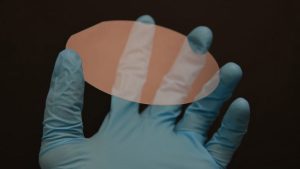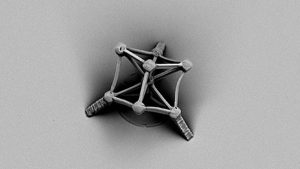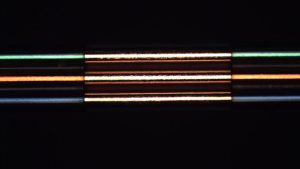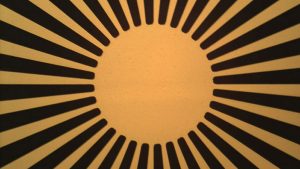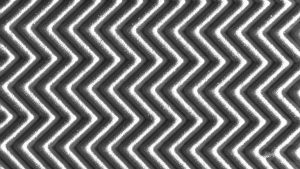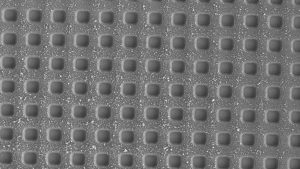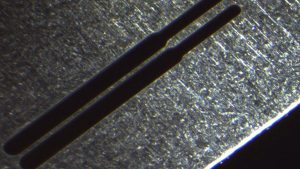Laser Lift Off (LLO) refers to a process where thin layers are separated from a substrate, such as polymers from glass, by use of a homogenized UV wavelength laser beam. The main requirement for successful LLO is that the substrate be transparent to the working wavelength, and the target layer be opaque. During processing of the sample, the beam is directed towards the target layer, passing through the transparent support (e.g. sapphire, glass) and creates a plasma at the interface that allows for clean “debonding” of both materials from each other. The transparent substrate serves as a carrier, allowing easy and safe manipulation of the relatively fragile target layer to fabricate thin and complex structures, such as those used in OLED displays.
Laser additive manufacturing refers to a family of processes in which the sample material is progressively added and piled-up in successive layers, as opposed to traditional laser manufacturing which removes (subtractive) matter to obtain the desired geometry. New advancements in laser technologies at Optec Lsser Systems have made it possible to combine additive with subtractive manufacturing into a single, versatile platform that delivers the best aspects of both techniques. These systems are particularly well suited for rapid prototyping and the manufacturing of unique pieces.
Electrical wires and guide wires used in a variety of devices often need to be stripped clean of their insulating jacket without damaging the conductor in order to ensure good ohmic contact in the circuit nodes. . Many different techniques are currently used including mechanical stripping and chemical processing. Laser wire stripping selectively removes the insulating jacket without damaging the wire(s) within and without hazardous waste. Attributes of the laser including wavelength, energy density and beam shaping make it possible to ablate polymers and not metal for precision material removal without leaving a residue. All of these characteristics make Laser Wire Stripping the go-to technique for demanding applications where the highest standards need to be met such as in medical devices and consumer electronics.
Laser structuring, also known as surface modification and texturing, refers to the fabrication of 3D features such as channels, ripples, grooves and holes in material. This technique can be used to produce complex and unique motifs that exhibit desired characteristics such as hydrophilic and hydrophobic properties or increase surface area that boosts lithium battery storage capacity and is mainly determined by the laser micro-machining system’s spatial resolution, beam conditioning and software control.
Surface treatment refers to any modification on a material that does not extend below its surface, often looking to improve certain characteristics or even confer new ones to the material. This is normally achieved by introducing periodic surface structures, such as the ones found on lotus leaves or gecko’s feet. Today, laser systems are being used worldwide to create these types of structures in order in diverse applications such as improving light absorption and diffraction, creating biocompatible structures, creating hydrophobic or hydrophilic materials, etc.
Laser patterning is the repetition of a given motif to generate 2D or 3D features that can then be used for different applications such as micro-lens arrays, inertial microfluidics, etc. For optimal results, the motifs must be exact copies of one another and positioned with high precision to yield a seamless, matrix array of the motif as seen in this image.
Laser drilling and cutting refers to the use of a laser source (e.g. excimer, ultrashort pulse femtosecond, fiber, diode pumped solid-state YAG) to create “deep” features on a sample, from blind holes and through holes to through cuts. The quality of the cut depends on many factors and can be gauged via different parameters including the absence of burrs on the edges, the heat affected zone (HAZ), debris, smoothness of the walls and a uniform bottom surface that has no apparent structure to it.
